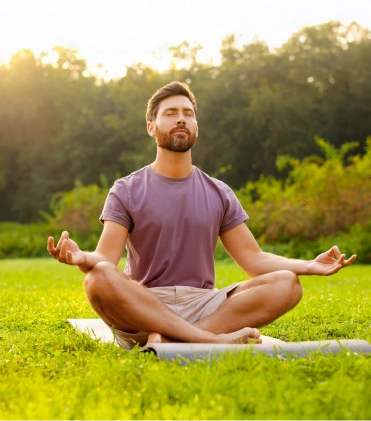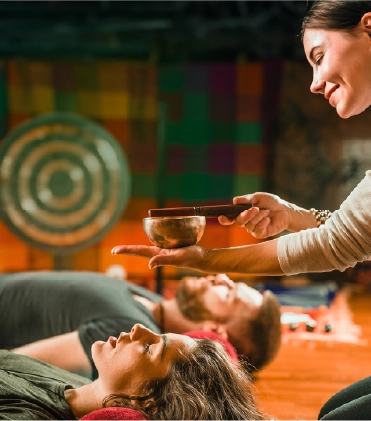What is the treatment?
Aromatherapy is a technique used in holistic healing practices. In this therapy, essential oils are used which are the extractions of the natural plants. These oils have unique aromas or fragrances that are used to promote physical, emotional, and mental well-being. It is also known as essential oil therapy. These aromatic oils are either inhaled or applied to the skin through the techniques of massage, baths, or compresses. Aromatherapy involves the use of therapeutic effects of each plant with specific benefits to promote relaxation, relieve stress, and support the general health of the individual.
Philosophy/Origin
Aromatherapy originated from the ancient cultural and religious practices of countries such as Egypt, India, and China. In these countries, oils were extracted from plants and used in medicine and beauty practices. In the modern world, the use of aromatherapy gained popularity after French chemist René-Maurice Gattefossé created the term after discovering the healing potential of essential oils. The philosophy behind aromatherapy is to create a balance between mind and body by using scents. The aroma of essential oils helps to stimulate the brain for physical and mental health benefits.
Physical Benefits
Mental/Emotional Benefits
Long-Term Wellness
Regular sessions of aromatherapy help to build emotional and physical well-being. Aromatherapy also helps to improve the function of different types of hormones, which helps to improve their functioning in the body. Aromatherapy also improves the energy levels and promotes alertness.
Ideal Audience
Aromatherapy is suitable for individuals who do not prefer invasive and medical treatments over holistic and natural healing practices. People who go for natural methods to manage stress and support overall health can benefit from this therapy. It is often used in the wellness practices of various individuals and can also be used in combination treatments.
Specific Conditions
The treatment consists of the following steps
Initial Assessment
During the initial assessment, the therapist discusses the health concerns, goals, and allergies of each individual. This may help the therapist to understand the unique situation of the individual and to make a treatment plan accordingly.
Essential Oil Selection
Based on the assessment of each individual, the therapist selects essential oils with specific therapeutic properties according to the individual needs. This careful choice makes sure that the oils used will promote the best possible outcomes for the individual.
Method of Application
There are several methods for applying essential oils, and the therapist chooses one or more according to the comfort and therapeutic goals of individuals. Some methods are as follows:
Inhalation
This method involves using steam inhalation, or inhalers, to scatter the essential oil into the air. Individuals inhale the aroma of essential plant extracts, which allows the therapeutic properties to enter the body through the respiratory system.
Topical Application
Essential oils can also be applied directly on the skin. This method allows the targeting of specific areas of concern and promotes relaxation.
Bath Therapy
The therapist may also add these essential oils to warm bathwater. The scent enters the water and creates a soothing atmosphere of relaxation.
Therapeutic Session
The therapeutic session typically lasts between 30 to 60 minutes. During this time, the therapist guides the individual to perform relaxation techniques. The environment is also calm to enjoy the full benefits of the treatment.
Post-Treatment Guidance
After the treatment session, the therapist provides the individual with advice on including aromatherapy in their daily life. The goal is to encourage the individuals to benefit from aromatherapy for a longer time, even after the session has ended.
What to Expect
Aromatherapy sessions provide relaxation and can also soothe the mind. Individuals experience soothing scents that calm the mind and body. When oils are applied to the skin, and the gentle massage technique is used, it increases circulation and provides relief from tension. Inhalation methods provide an immediate sense of relief and mood improvement.
Immediate Effects
Long-Term Effects
Before the Treatment
The therapist asks about each individual's specific allergies, medical conditions, and sensitivities to avoid any discomfort or irritation during the session. Strong perfumes and lotions can interfere with the aroma of essential oils, so it is better to avoid them.
Aftercare
Some oils used in the session can be photosensitive, so the therapist may suggest avoiding direct exposure to sunlight. Essential oils can also be used at home according to the guidance of the therapist. Individuals should notice and inform the therapist about any type of reaction immediately.
Aromatherapy is widely performed at spas, wellness centers, holistic health clinics, and platforms like Wellencia. It is performed in many countries like China, India, and Egypt. The sessions should be performed under the guidance of certified aromatherapists and practitioners to ensure personalized sessions according to individual needs. Essential oils are also easily accessible for home sessions and practices.









